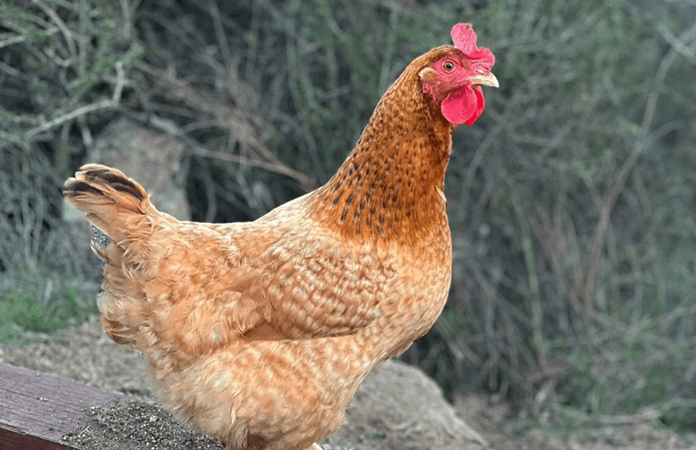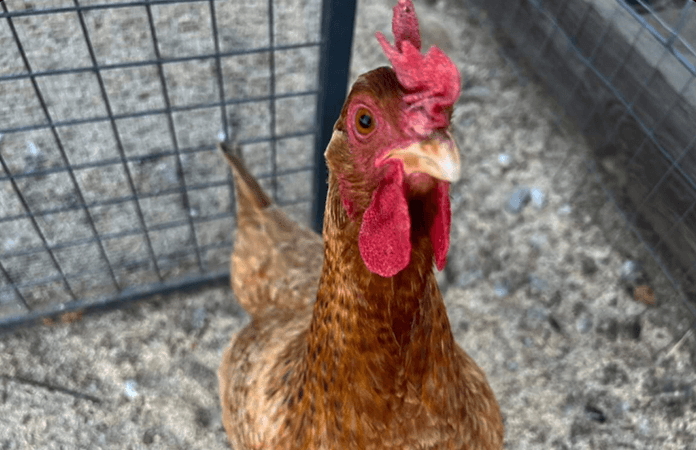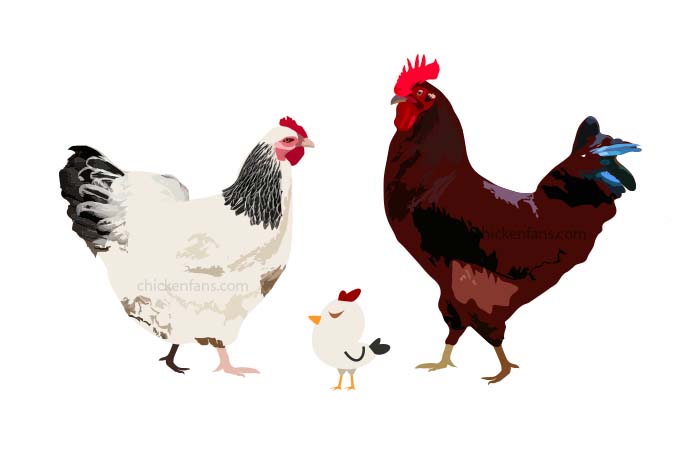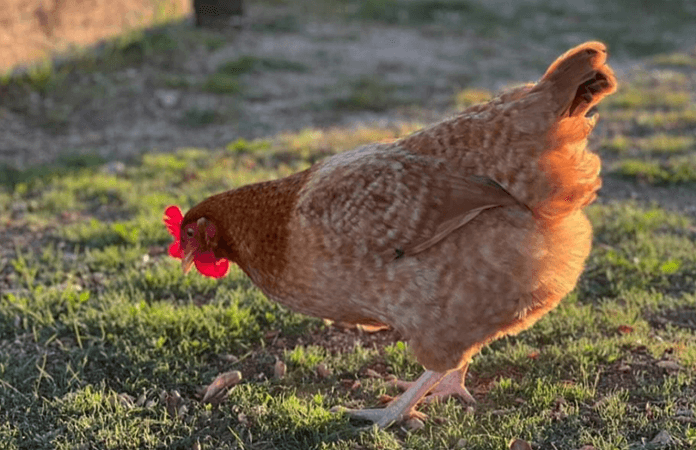Hampbar Chicken: A Complete Breed Guide

Developed in the 1950s in Canada, the Hampbar chicken has a fascinating history and yet remains relatively unknown to the large public. This dual-purpose chicken is a cross between a Rhodebar and a New Hampshire and is an auto-sexing breed that’s quite rare.
Let’s find out everything there is to know about this uncommon breed.
- Hampbar hens lay up to 240 XL eggs yearly
- Crossbreed of a Rhodebar and a New Hampshire
- Autosexing dual-purpose breed
- Rare chicken originating in Canada
| Eggs | 240 eggs per year |
| Egg Color | Brown |
| Egg Size | Extra- large |
| Weight | 6 – 7 lbs |
| Hardiness | Cold |
| Temperament | Friendly |
| Beginner-friendly | Yes |
| Color | Varies |
Characteristics & History
A Hampbar chicken is a medium-sized chicken with fantastic looks. They were originally developed in Canada in the 1950s to create an auto-sexing dual-purpose breed.
The full name of a Hampbar chicken is Barred New Hampshire, giving away some information about its ancestors. The breed was created by crossing Rhodebar males with specially selected New Hampshire females.
Hampbar chickens are a very uncommon and rare breed.

Let’s take a closer look:
What is a Rhodebar chicken?
A Rhodebar chicken is an auto-sexing breed developed by crossing a male Barred Plymouth Rock and a Rhode Island Red hen. It was first called Redbar, but the name was later changed to Rhodebar. They’re a dual-purpose breed and great egg layers.
What is a New Hampshire chicken?
A New Hampshire Red or a New Hampshire is a well-known chicken breed developed by selectively breeding Rhode Island Red stock for rapid growth and rapid feathering. There are no other breeds involved in the development of the New Hampshire.
What is a Hampbar chicken
By crossing a Rhodebar rooster and a New Hampshire female, a Hampbar chicken is born. The result is a sturdy dual-purpose breed with good egg-laying skills. And because of its auto-sexing, the chick’s sex is determined right after hatching. Auto-sexing chicks have different colors in males and females.
What are auto-sexing chickens?
Autosexing chicken breeds are pure breeds where the color or pattern of the feathering can determine the sex of a day-old chick. This process is not to be mistaken with sex-link chickens, which are hybrid chickens bred from two different parents and where the day-old males and females have different plumage colors.

Hampbar chickens are autosexing chickens as they are a pure breed. The male chicks are mostly lighter in color and don’t have any black spotting on the head or back. This has everything to do with crossing a chicken carrying the barred gene and a chicken with a solid plumage.
As the Hampbar is the result of crossing a Rhodebar chicken (carrying the barred gene) and a New Hampshire hen (not carrying the gene), the outcome is a male chick carrying two barred genes and the female carrying one. This means the males are lighter than the females.
Egg production
Hampbar chickens are great egg layers, although they are a dual-purpose breed. They lay up to 240 extra-large eggs yearly, that’s almost 5 per week.
All eggs of the Hampbar chickens are brown. Because these chickens were bred as decent laying birds, so they’ll mostly keep on laying during winter, although their egg production can decrease.
Personality
As the Hampbar chicken descends from a Rhodebar and a New Hampshire, their personalities are also related. Hampbars are a docile and friendly breed, but the roosters can be somewhat feisty.
They tend to be higher in the pecking order and are, therefore, best placed with other friendly but more dominant breeds, like Rhode Island Reds or Plymouth Rock.

These chickens are a great addition to any backyard flock and are family-friendly. Just remember they’re not pet chickens you can pick up and keep on your lap.
The breed does fine in confinement but always ensure they have plenty of space to roam around and stretch their legs.
Summary
A Hampbar chicken is a medium-sized chicken that was first bred in the 1950s in Canada as a dual-purpose breed. It is an auto-sexing breed created by crossbreeding a New Hampshire female with a Rhodebar male.
They lay up to 240 eggs yearly, all extra large and brown.
As all chickens are prey animals, you want to ensure they are safe. Installing an automatic chicken coop door is a solution to protect your Hampbar and other chickens from common nighttime predators. Many brands are available, including ChickenGuard, Omlet, Chickcozy, Vevor, and Run Chicken.
To learn more about chicken breeds, check out our ‘Chicken Breeds Page‘ to see every specific breed we address. Or go to our listicle breed summary on ‘The Classroom‘, or, if you’re unsure where to start, take a look at our ‘Chicken Breeds: Ultimate Beginners Guide‘.
If you’re interested in reading more on brown-colored chickens, take a look at ‘Top 15 Brown Chicken Breeds: All Beginner-Friendly‘.
Credits Featured Image: @allispaghetti (IG)
Related Questions
A Hampbar chicken is a dual-purpose autosexing breed created by crossbreeding a New Hampshire hen with a Rhodebar rooster. It is a rare and uncommon breed.
Hampbar hens lay large to extra-large brown eggs.
Hampbar hens are great egg layers. They lay around 240 eggs yearly; that’s more than four eggs per week.
Yes. Hampbar chickens are friendly and docile, especially towards humans, but the roosters can be feisty. They tend to be higher in the pecking order.






















